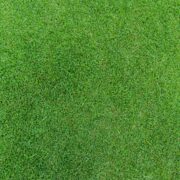One of the first lessons learned in the elementary school classroom is the concept of “ecosystems.” Perhaps you remember bringing in your hand-crafted scale model of your favorite ecosystem; whether it be the tundra or the desert. Heading into adulthood, you learned more about steps you should take to maintain your ecosystem and began clearing up the yard or making sure your soda can was recycled. In this day and age, there is so much activism and literature surrounding Green Deals and Earth-saving steps; however, one of the most important ecosystems seems to fall to the wayside.
While lakes make up only 3% of the Earth’s surface, they are home to over 6% of the world’s known species, while also being the best available freshwater source anywhere on Earth. Lakes are also highly valued in society for recreation, tourism, fishing, and biodiversity. In the United States, lakes cover almost 40 million acres and are standard sites near golf courses, waterfront properties, and country clubs.
If you live near one of these critical bodies of water, here are a few steps you should take to ensure that you take care of the ecosystem in your backyard.
- Treat the lake as an extension of your home. You should be taking care of the water by ensuring you aren’t using any pesticides, herbicides, or fertilizers that can runoff into the water. These can poison the wildlife and plants living in the lake.
- Take control of aquatic weeds. Weed control for lakes is essential for increased oxygen levels, normal water flow, and healthy fish and wildlife.
- Know that some home or lifestyle changes can harm the lake ecosystem. These can include building an inground pool or permanently installing a dock. Paved driveways and sidewalks can also increase runoff from your yard. You can avoid this by replacing your pavements with greener alternatives and aerating your yard.
While lakes may not be the first ecosystem to springs to mind, it’s always essential to remember this freshwater home’s importance and key place in society. Take a few extra steps to ensure that your backyard ecosystem is consistently healthy and thriving.














Comments